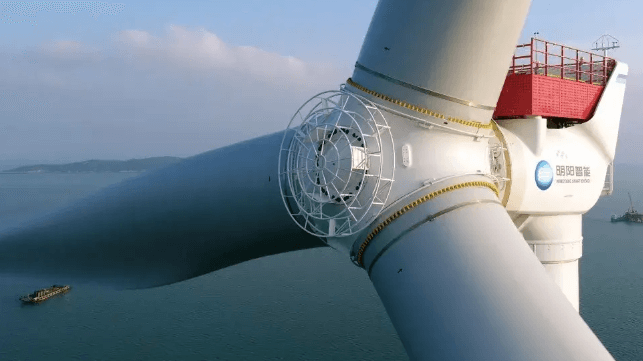Oil Tanker and Container Shipping Rates Hit Record Highs
- Shipping rates for clean tankers and containers have reached nearly $100,000 per day due to disruptions in the Red Sea.
- The blockage has led to increased freight costs, particularly for oil and container shipments, impacting global trade routes.
- This situation has resulted in inflationary pressures and concerns about the sustainability of current shipping rates and the potential impact on the global economy
One month ago, when it first became apparent that the Red Sea blockage by Iranian proxies would prove to be a prolonged affair, we warned that "Red Sea Blockage Means A New Round Of Surging Cost-Push Inflation", which got confirmation just a few days later when we showed the sudden spike in container shipping rates that used the Suez Canal as a transit choke point.
That, as we strongly suspected, was just the beginning, and according to Bloomberg, a key Clean Tanker rate tracked by the Baltic Exchange, has exploded to almost $100,000 a day on the Red Sea disruptions.
Specifically, the cost of shipping fuel on a route that mostly hauls naphtha from the Middle East to Japan surged (again) on Wednesday, with the daily charter earnings climbing 18% to $98,000/day, the highest since May 2020. Meanwhile, earnings for smaller ships sailing from the Middle East to Japan route rose 22% to $75k/day, also the highest since May 2020.
The charts of the day from the latest Goldman Oil Tracker (full report available to pro subscribers in the usual place) shows something similar, if slightly less dramatic: the first shows that oil flows through the Bab-El-Mandeb continue to deteriorate, and remain down 1.2mb/d (or 20% on a 14DMA Basis) since disruptions started on December 18th, 2023 and down 2.4mb/d (or 33%) from the pre-disruption 2023 average.
At the same time, Goldman's indices of global freight rates for clean and dirty oil tankers have risen 1$/bbl (16%) and 0.8$/bbl (25%), respectively since the disruptions began. The impact of Red Sea disruptions on volumes through the Red Sea and on freight rates is significantly larger for containers transporting goods than for oil tankers (and certainly for US and European ships than for Chinese and Russian ones).
Paradoxically, the more moderate impact on oil flows reflects the lower physical risk from a Red Sea journey - as many oil tankers are from Russia and the Middle East, both of which are on the Houthi "friendly" list - and a greater cost of delaying the delivery through a longer alternative journey.
The bottom line is that the Red Sea blockage is - despite the best wishes of cecntral bankers everywhere who can't wait to start cutting rates ahead of the record avalanche of elections this year - becoming a huge inflationary headache for global freight. Furthermore, as LoadStar reports, container spot rates from Asia to the US and Europe continued to soar this week as any solution from the toothless (both literally and metaphorically) Biden regime to the attacks on shipping by Houthi rebels looks increasingly unlikely.
Moreover, reports to The Loadstar suggest that some shippers of low-rated contract cargo are seeing their allocations slashed by up to 80% by their carriers, forcing them onto the spot market.
Xeneta’s XSI Asia-North Europe spot component jumped 25%, for an average of $4,612 per 40ft, representing a month-on-month increase of nearly 200%.
However, for shipments before the Chinese New Year, which commences on 10 February, some carriers are touting rates in excess of $10,000 per 40ft. One UK-based NVOCC director told The Loadstar he had decided only to ship his most urgent boxes before CNY, on the basis that rates should go down in the traditionally slack period following the holiday.
“The lines have plenty of ships and demand is still not that strong, so once the longer transits get baked into their schedules, I can’t see any reason why rates would stay high,” he said.
Meanwhile, Mediterranean shippers are not only facing huge delays in containers arriving from Asia, but are seeing the cost of spot freight rates leap to more than $6,500 per 40ft, from $2,300 at the end of December.
Elsewhere, transpacific spot rates from Asia to North America are “out of control”, according to a UK forwarder contact currently in Shanghai.
“The lines are charging what they like at the moment, whether that is to the west or east coast, the market has been taken over by a return of the pandemic ‘fear factor’ of not getting product shipped,” said the forwarder.
Unfortunately, it's only getting worse as transpacific carriers are still in the process of raising their rates, with further FAK (freight all kinds) hikes planned for 1 and 15 February.
Drewry’s WCI Asia to US west coast spot shot up 38% this week, to an average of $3,860 per 40ft, while its east coast spot climbed 35%, to $5,644 per 40ft, respectively 88% and 64% higher than for the same week of last year.
Vespucci Maritime’s Lars Jensen commented: “It would appear that the carriers’ ability and shippers’ de facto willingness to accept steep increases matches the behaviour we saw in the pandemic.”
The silver lining is that for now at least, the contagion has not spread to transatlantic spot rates, which were mostly flat this week, with the XSI North Europe to US east coast spot stuck at a lowly $1,432 per 40ft (but climbing ever so gradually. And indeed, according to The Loadstar’s contacts, there are “big increases in the pipeline” that will kick in next month.
“With the crazy rates the lines are getting elsewhere I can’t see that the carriers will accept the current transatlantic rates for much longer,” said a Liverpool-based forwarder contact.
By Zerohedge.com
